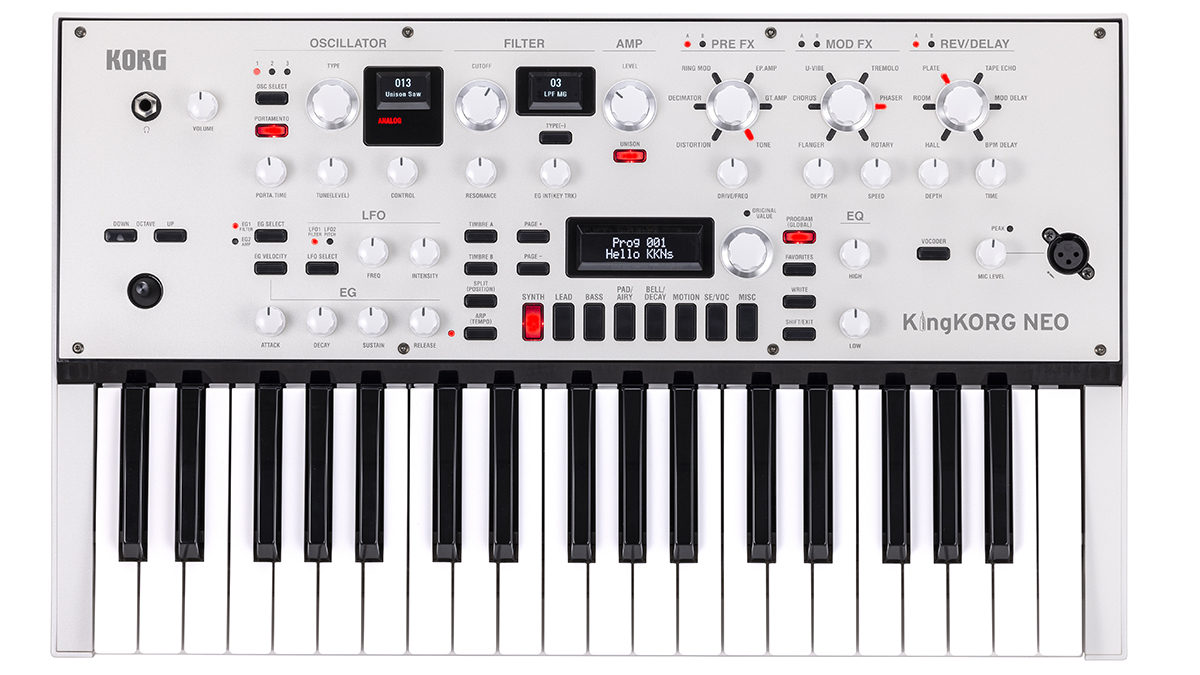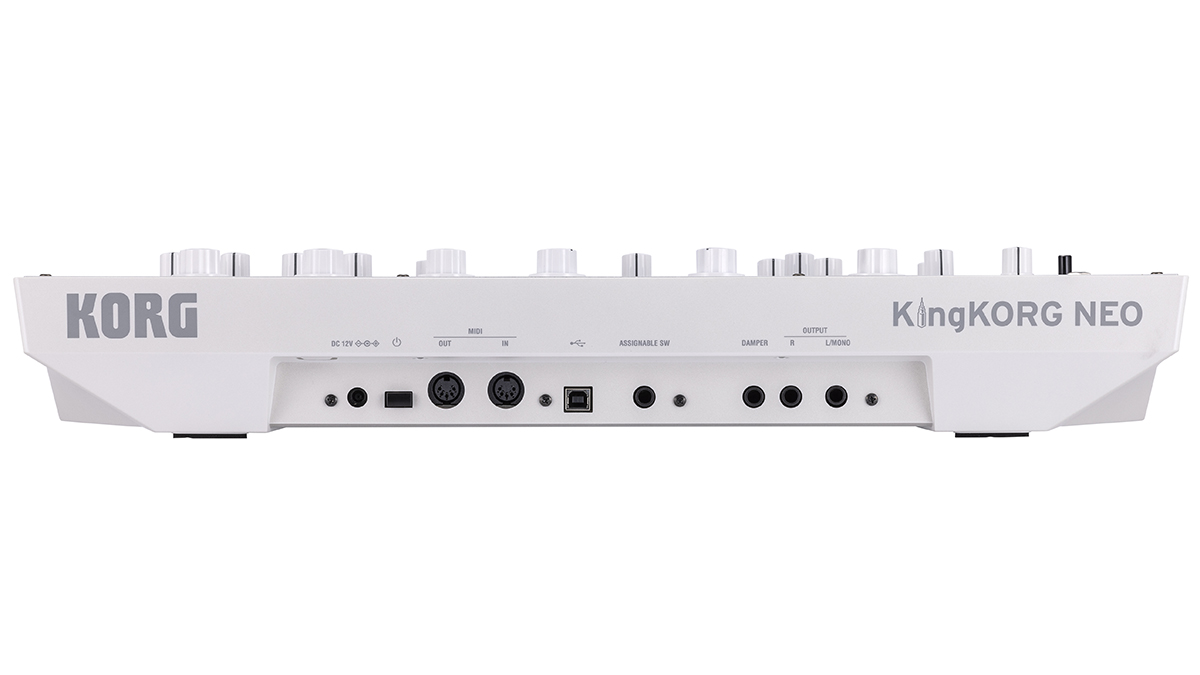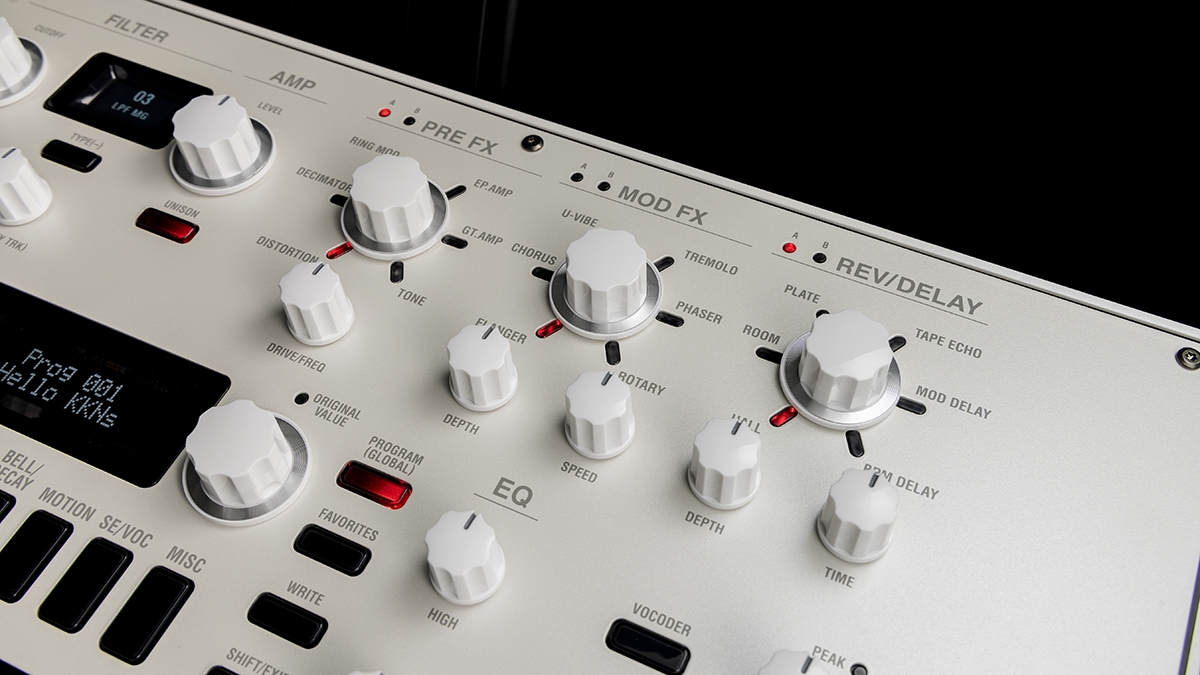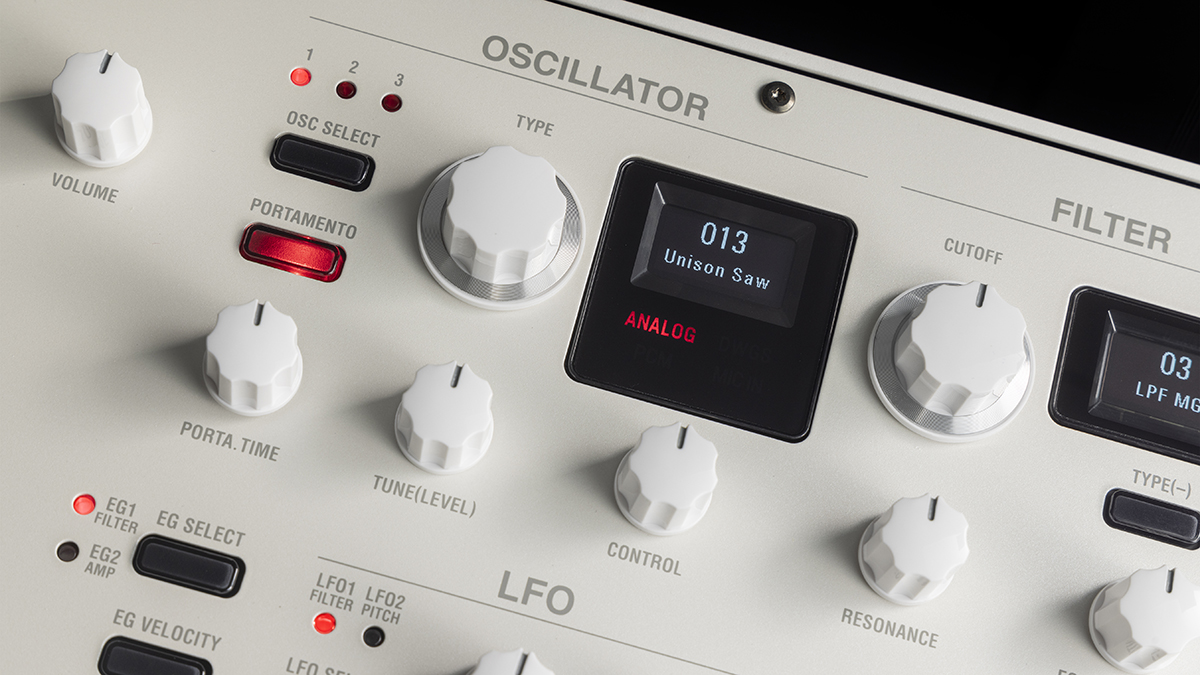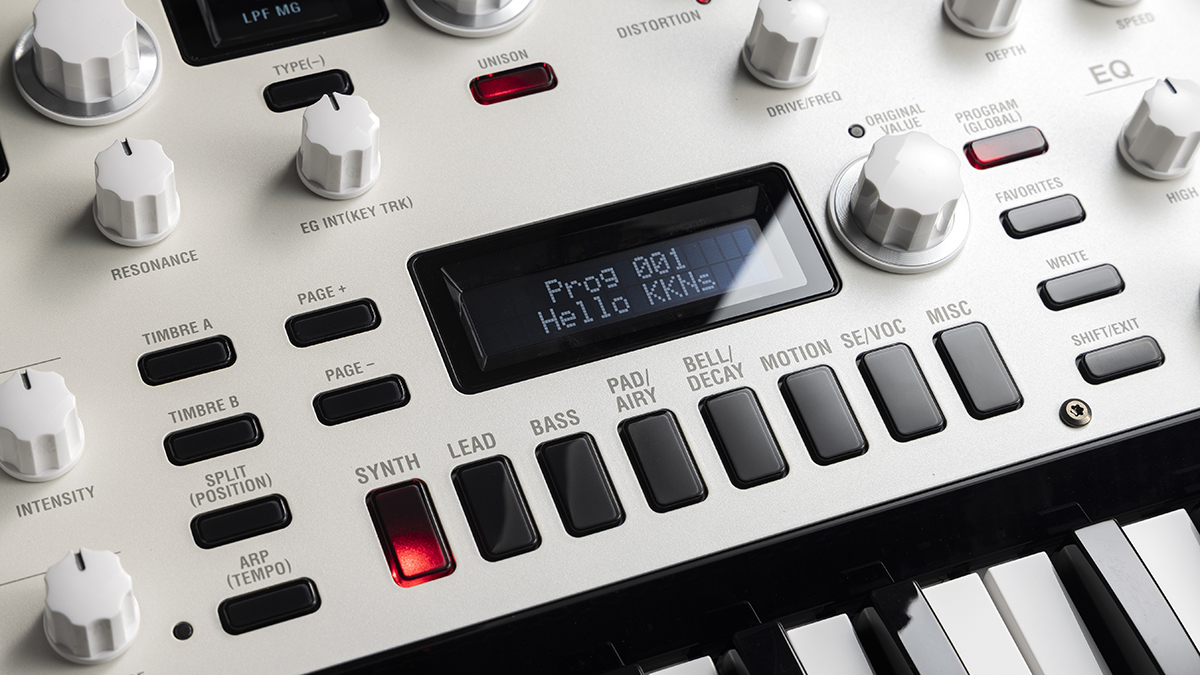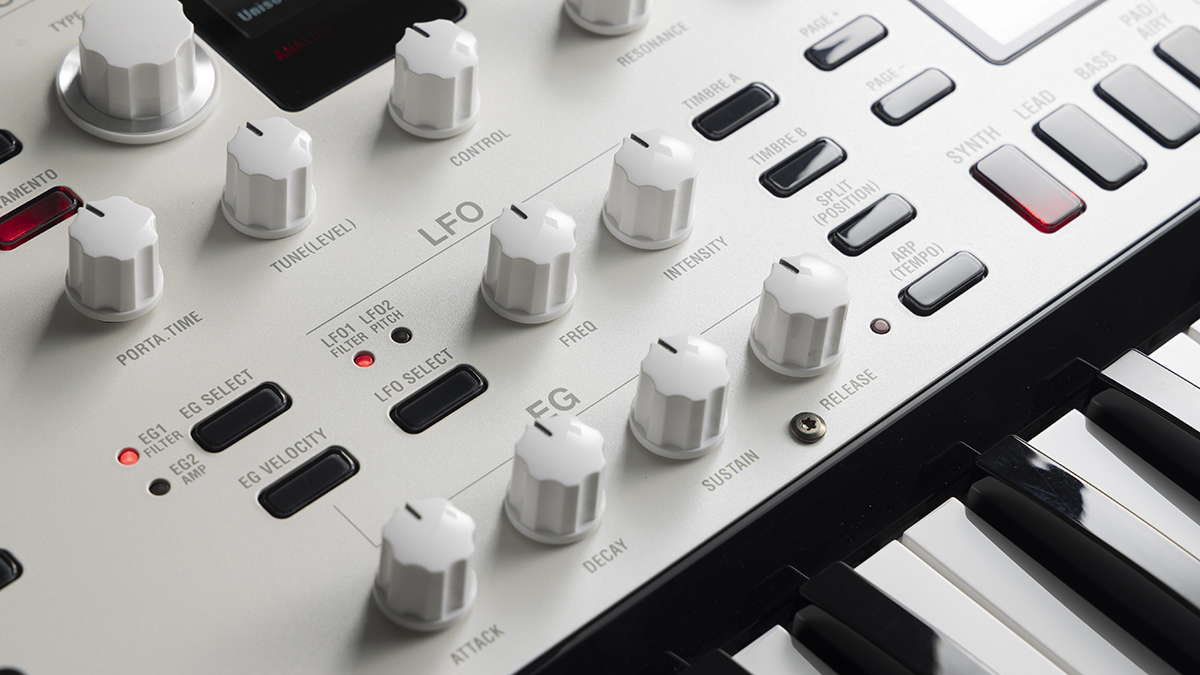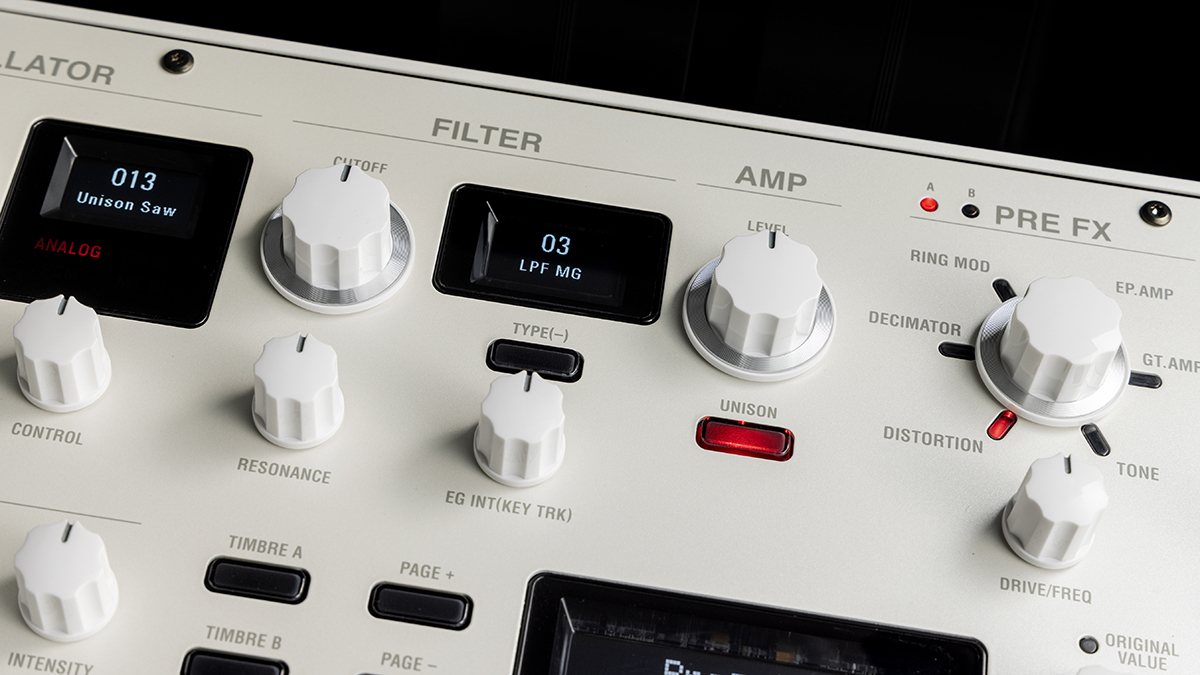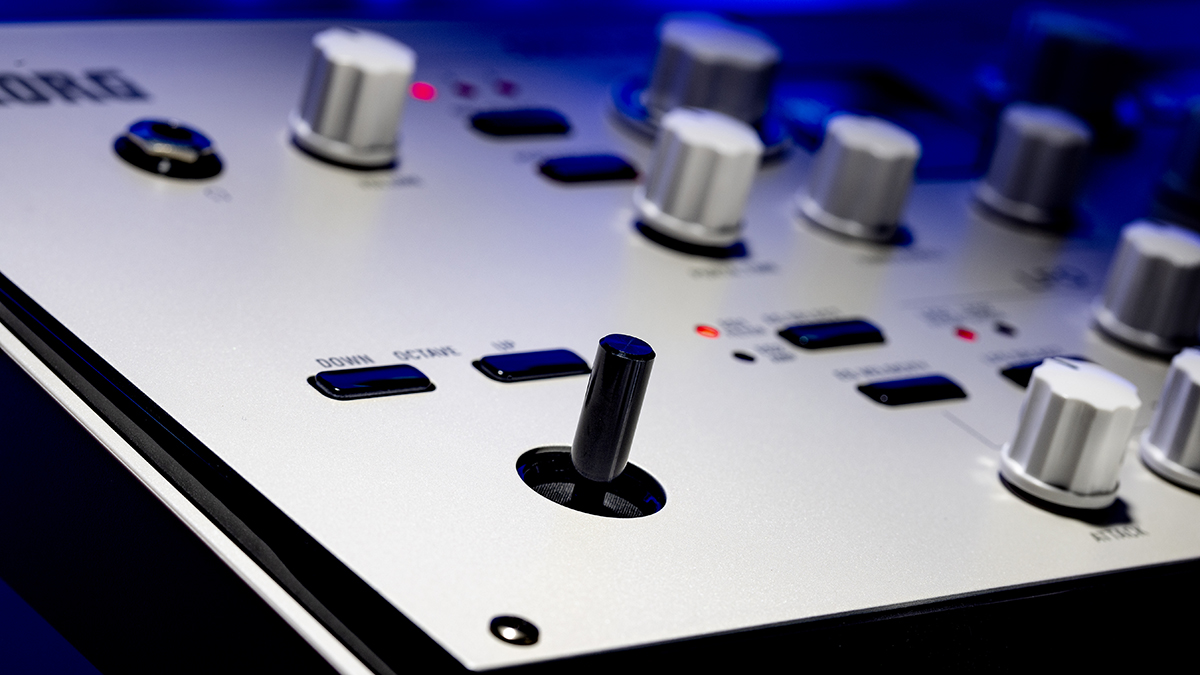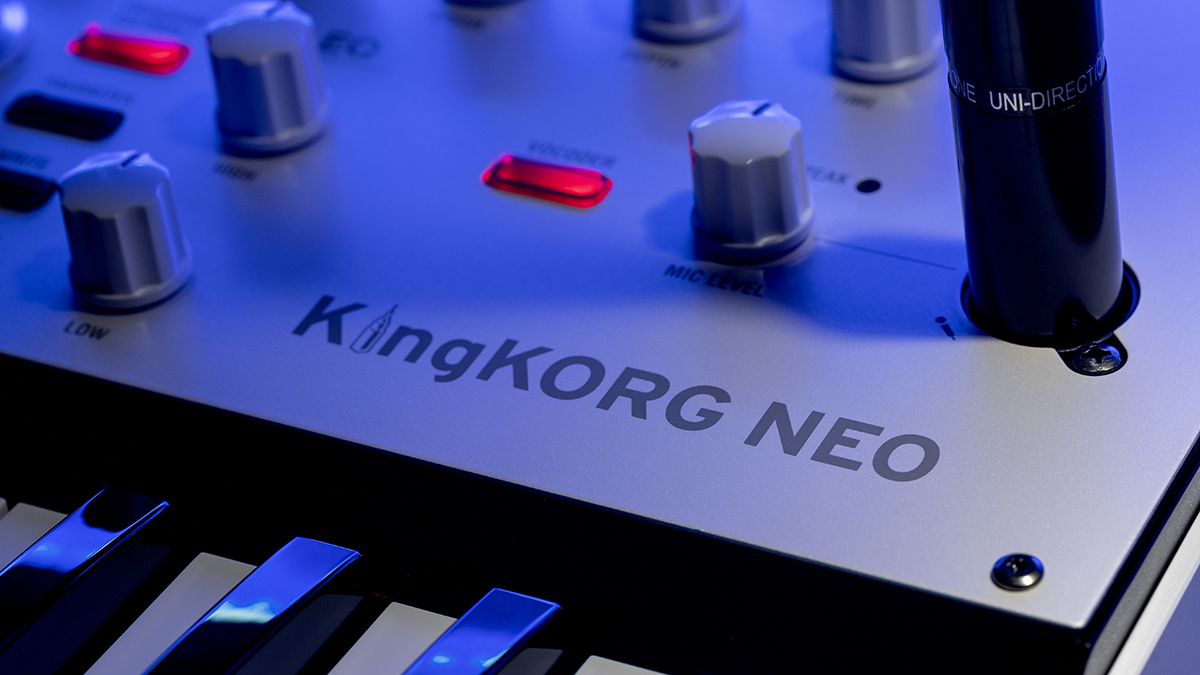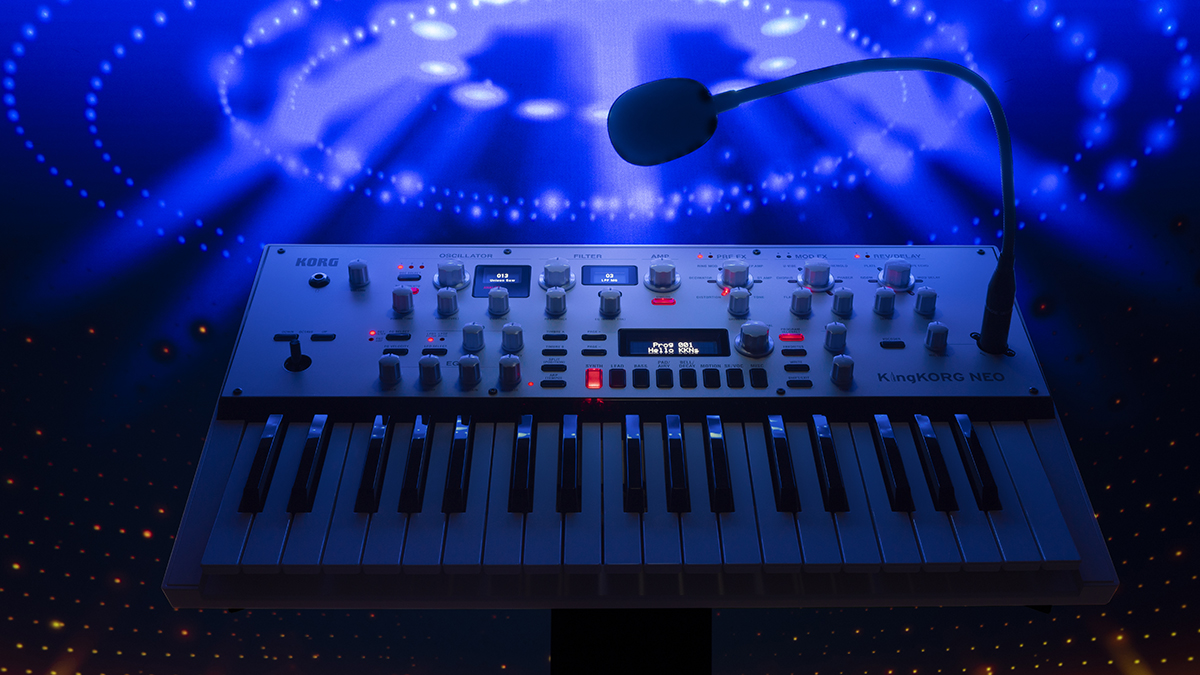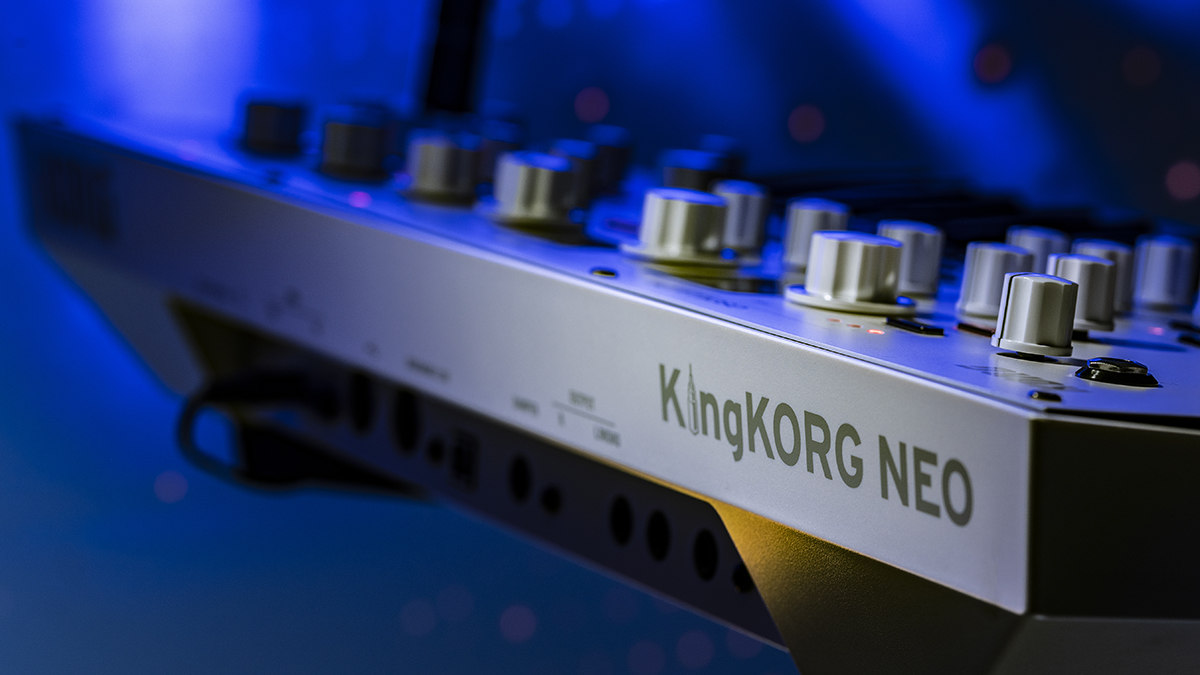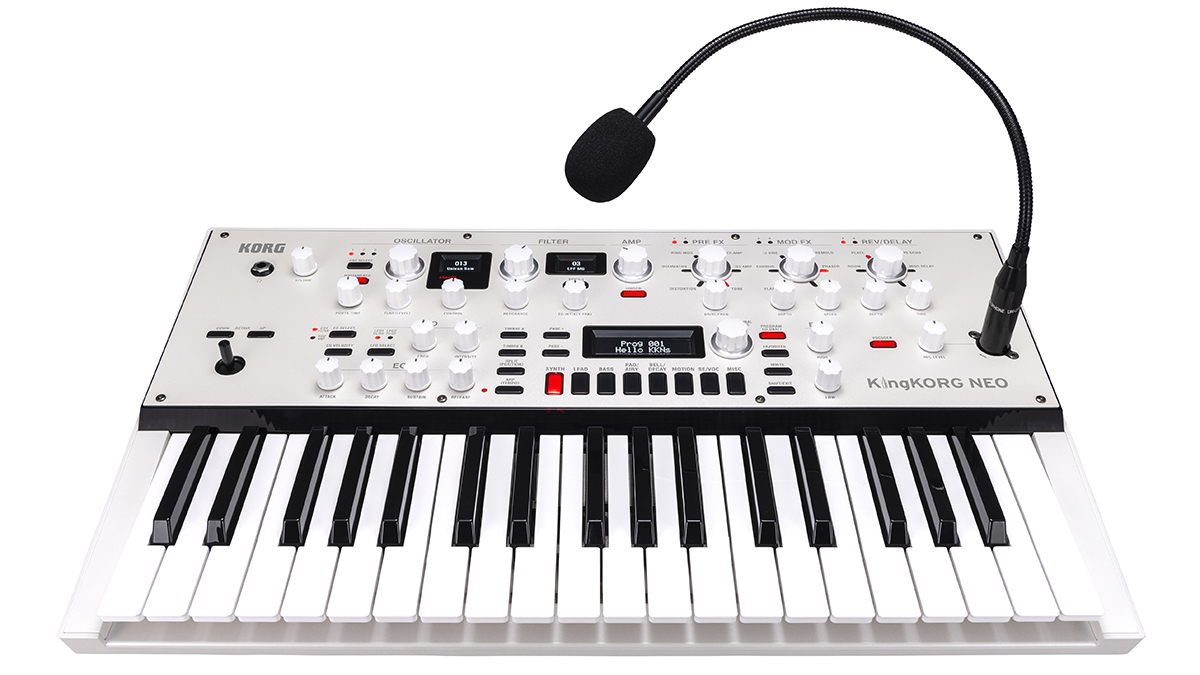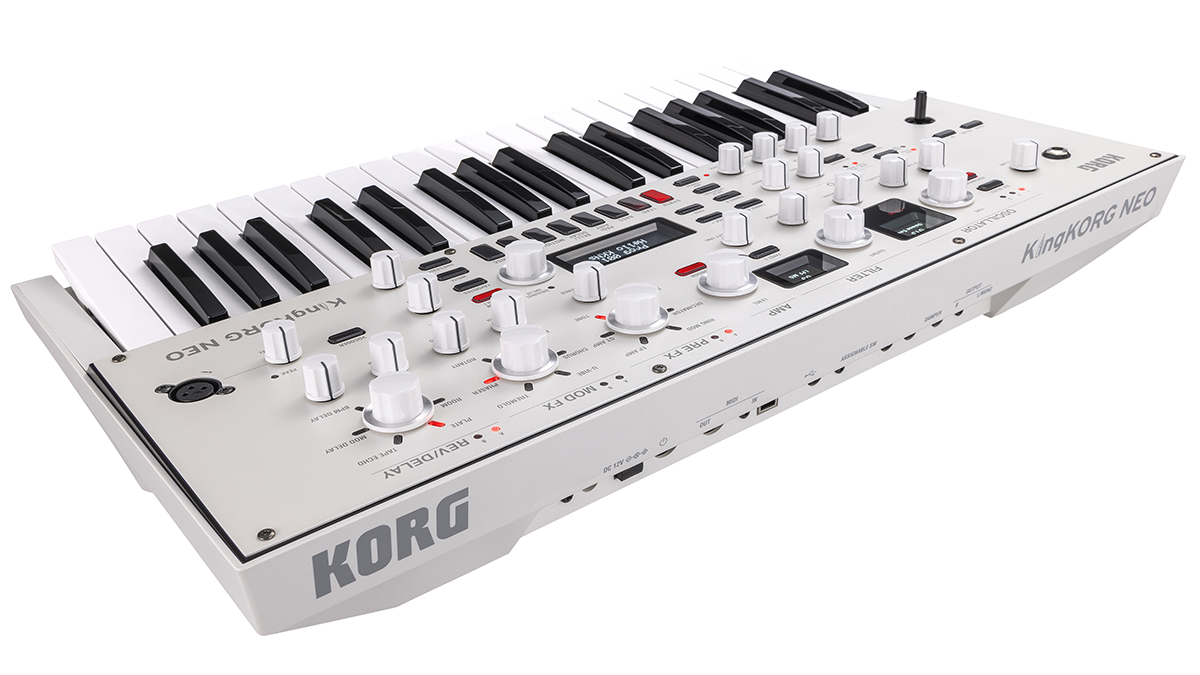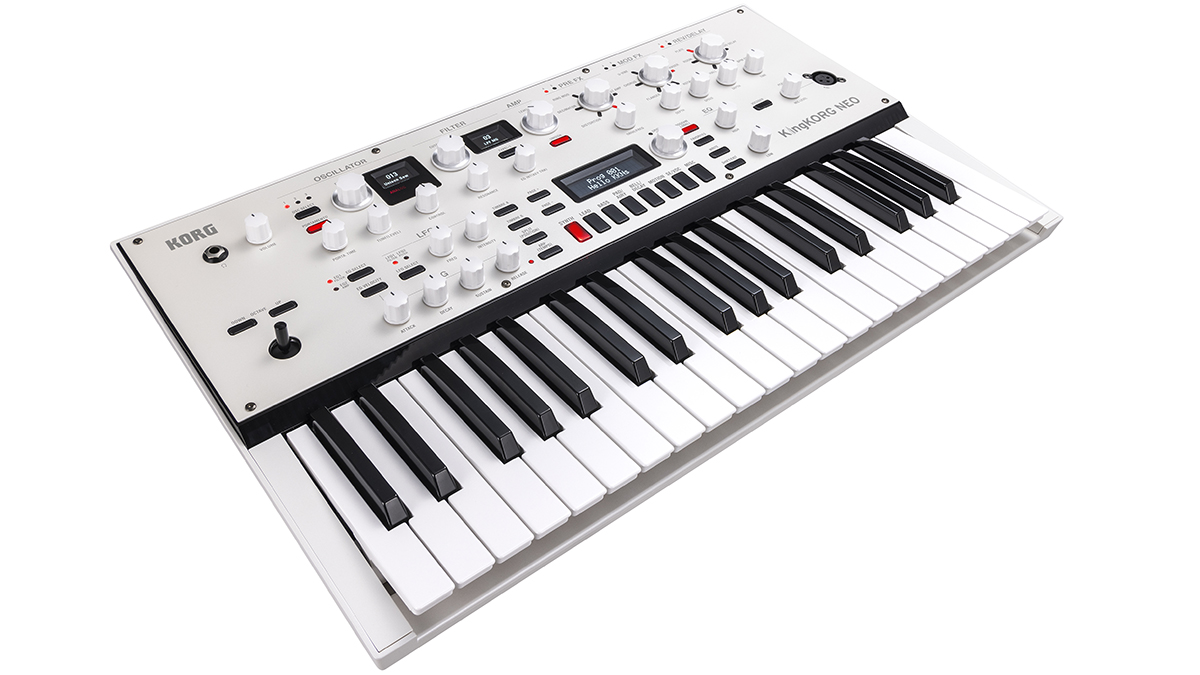NAMM 2024: The KingKorg synth wasn’t dead, it turns out, just sleeping. This 2013 61-note keyboard never really seemed to fully capture the public’s imagination, but Korg has now taken the XMT virtual analogue engine that powered it and stuffed it into the more compact KingKorg Neo.
XMT stands for eXpanded Modelling Technology, with the aim of it being to provide a wide variety of sounds and simple operation. This means preset algorithms that combine different oscillator types - everything from simple sawtooth and square waves to more complex offerings and PCM/DWGS.
The extensive filter section, meanwhile, models multiple types - expect the flavour of ‘70s monosynths, ‘80s polys and, of course, Korg’s own MS-20. There’s a 16-band vocoder, too, complete with formant shifting and individual control over the level and pan of each band. Either the input from the supplied mic or the synth itself can be used as the modulator.
In fact, each of the three oscillators or two timbres (A and B) can be set as the source for the mic input, opening up even more possibilities.
KingKorg Neo also offers three master effect slots, each of which can access six different effect types. The Pre FX slot includes the likes of distortion and an amp sim; Mod FX deals with phasing, chorus and tremolo; and Rev/Delay does (wait for it) reverb and delay. You can select which effect goes in each slot with a dedicated dial, then finetune it with further controls.
So far, so straightforward, but if you want to stretch the limits of the KingKorg Neo’s capabilities, you’ll want to familiarise yourself with its virtual patching system, which enables you to make six virtual patch assignments for each of the two timbres. So, you can connect control signals such as EG, LFO and joystick movements to the sound parameters of your choice.
You don’t have to go this deep, though: KingKorg Neo has 200 presets spread across eight categories, so you can just dive in and start using those if sound design isn’t your thing. There’s also a handy step arpeggiator that will automatically generate arpeggiated phrases based on the chords you play; you can choose from six different arpeggio types and specify the duration, interval and on/off status of each step.
With its OLED display and block-based layout, the KingKorg Neo’s interface appears to be clean and concise, and you can also assign up to 40 programs to eight category favourite buttons for easy recall during live performances. The 37 full-size keys are velocity and release-velocity sensitive.
We have waited a long time for a new KingKorg, but the good news is that we won’t have to wait too much longer. The Neo will be available from February priced at £949/£1,099.
Find out more on the Korg website.
